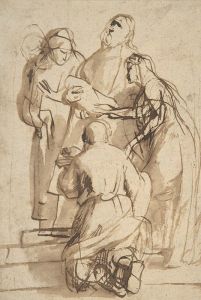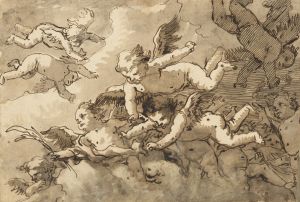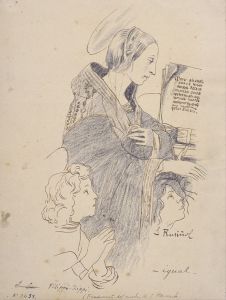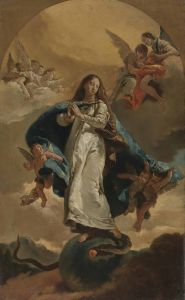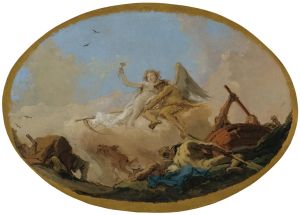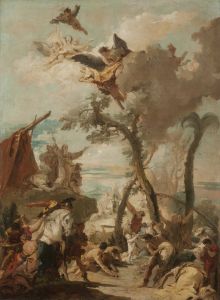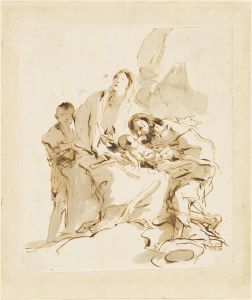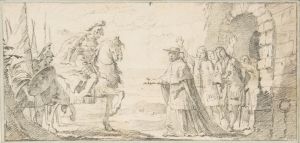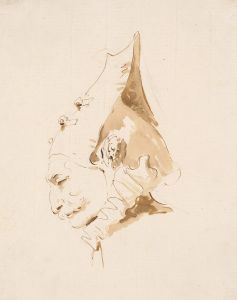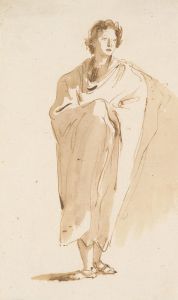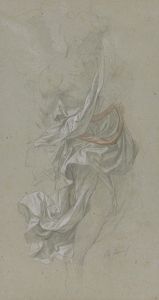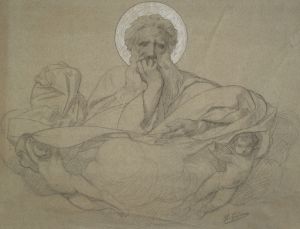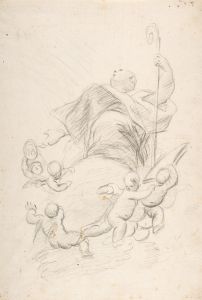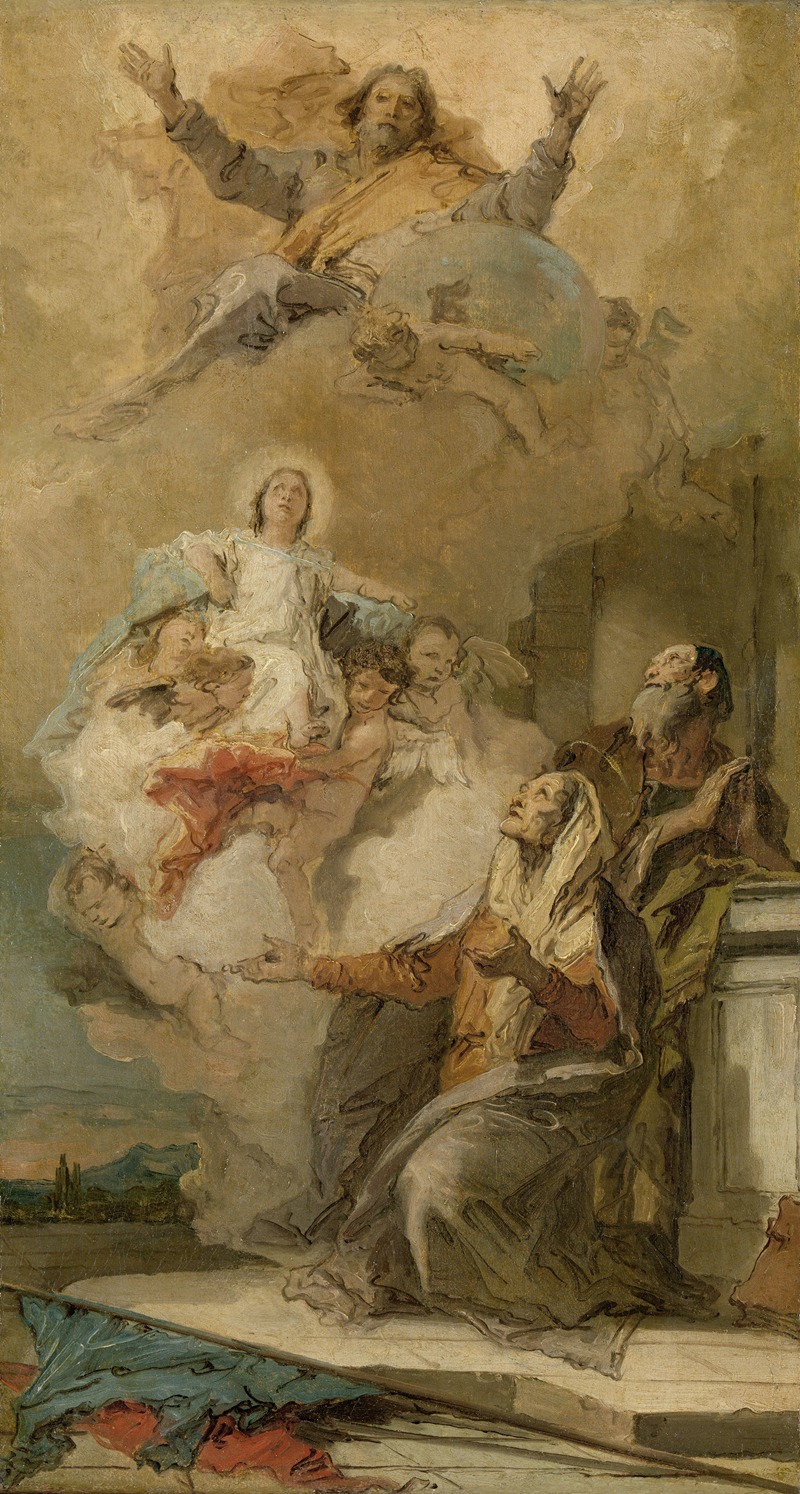
The Immaculate Conception
A hand-painted replica of Giovanni Battista Tiepolo’s masterpiece The Immaculate Conception, meticulously crafted by professional artists to capture the true essence of the original. Each piece is created with museum-quality canvas and rare mineral pigments, carefully painted by experienced artists with delicate brushstrokes and rich, layered colors to perfectly recreate the texture of the original artwork. Unlike machine-printed reproductions, this hand-painted version brings the painting to life, infused with the artist’s emotions and skill in every stroke. Whether for personal collection or home decoration, it instantly elevates the artistic atmosphere of any space.
"The Immaculate Conception" is a painting by the Italian artist Giovanni Battista Tiepolo, created around 1767-1769. Tiepolo, a prominent figure of the Venetian school, was renowned for his grandiose and dramatic compositions, often infused with vibrant colors and dynamic movement. This particular work exemplifies his mastery in depicting religious themes with a sense of grace and celestial grandeur.
The painting portrays the Virgin Mary in the traditional iconography of the Immaculate Conception, a doctrine that asserts Mary was conceived without original sin. She is depicted standing on a crescent moon, a symbol often associated with her purity and divine nature. Surrounding her are cherubs and angels, enhancing the heavenly atmosphere of the scene. The background is filled with a luminous sky, suggesting a divine light that emphasizes Mary's sanctity.
Tiepolo's use of light and color in "The Immaculate Conception" is particularly noteworthy. The soft, glowing light that envelops Mary and the surrounding angels creates a sense of ethereal beauty and otherworldliness. The delicate interplay of light and shadow adds depth and dimension to the figures, making them appear almost three-dimensional. The vibrant hues of blue, pink, and gold further enhance the painting's visual impact, drawing the viewer's eye to the central figure of Mary.
The composition of the painting is carefully balanced, with Mary positioned centrally and slightly elevated, drawing attention to her as the focal point. The surrounding angels and cherubs are arranged in a circular pattern, creating a sense of movement and dynamism that is characteristic of Tiepolo's style. This arrangement not only highlights Mary's importance but also conveys a sense of harmony and unity within the celestial realm.
"The Immaculate Conception" was commissioned for the Church of San Pascual in Aranjuez, Spain, reflecting the widespread devotion to the Virgin Mary during the 18th century. The painting's location in a religious setting underscores its significance as a devotional image, intended to inspire piety and reverence among the faithful.
Tiepolo's ability to convey complex theological concepts through his art is evident in this work. The Immaculate Conception, a subject of significant theological debate and devotion, is rendered with clarity and beauty, making it accessible to viewers of all backgrounds. Tiepolo's skillful execution and imaginative vision have ensured that "The Immaculate Conception" remains a celebrated example of religious art from the Baroque period.
In summary, Giovanni Battista Tiepolo's "The Immaculate Conception" is a masterful depiction of a central Christian doctrine, characterized by its luminous color palette, dynamic composition, and profound spiritual resonance. The painting continues to be admired for its artistic excellence and its ability to convey the divine mystery of the Immaculate Conception with grace and beauty.





